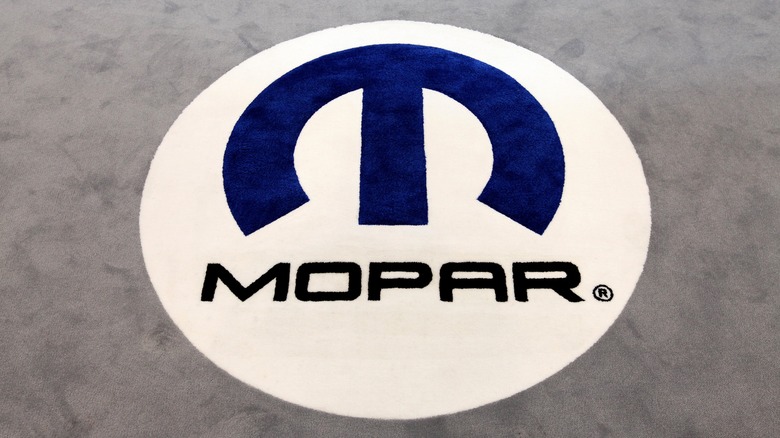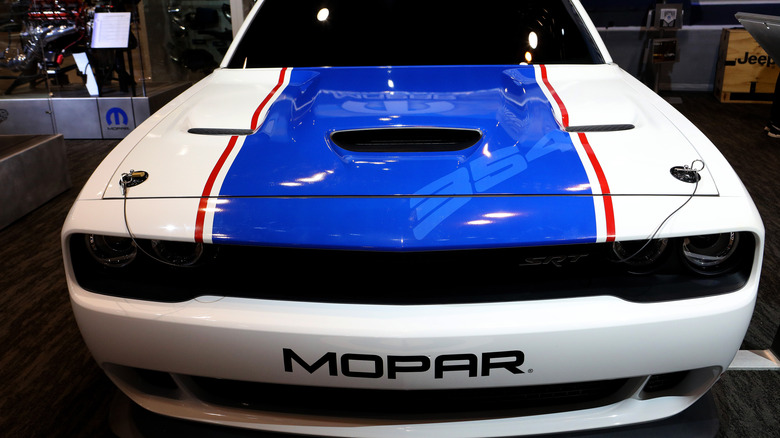What Is A Mopar, And What Does It Stand For?
The word "Mopar" is ubiquitous within the realm of car enthusiasts, mainly those from the muscle-bound era of hot rods where the tires were big, the engines were loud, and chrome was everywhere. But did you know that the name was first bandied about as far back as the late 1920s and was a shortened form for Chrysler Motor Parts Corporation? Heck, the amalgamated word is sitting right there smack in the middle: MOtor PARts.
But we're getting ahead of ourselves. Let's jump back to the Great Depression, a period of American history that lasted roughly a decade, from 1929 to 1939. When the stock market crashed in '29, it sent the U.S. into a spiral that resulted in millions of people losing their jobs and standing in food lines. By 1933, the unemployment rate had peaked at 25.6% (or one in every four people). Not only that but the Great Plains were wracked by the worst drought in the country's history, causing endless dust storms that made farming all but impossible.
To say people were "depressed" by 1937 was an understatement. They needed help, no matter how small the gesture. So, the Chrysler Corp. invented a product that today is so commonplace and as much a part of every car on the road as oil and gasoline. We are, of course, talking about antifreeze — that other car fluid that we often forget about but still needs to be changed occasionally.
Mopar means more muscle
Believe it or not, in the late '30s, a cheap, anti-corrosive liquid that would keep engines from freezing or boiling over didn't exist. And the last thing people needed (or could afford) was to have their engine die in inclement weather. As hard as it might be to fathom now, antifreeze was a revelation to car owners at the time. This new-fangled invention was the first product in Chrysler Corp.'s new line of "MoPar" parts and accessories, and the name took off.
According to Mopar, production shifted to making parts, weapons, and vehicles during World War II to support the war effort. In the '50s, it introduced a complete line of products for all Chrysler cars. By the '60s and '70s, car and high-performance enthusiasts began using the name as an impactful way to describe their own vehicles. "Mopar cars" are considered those that came from the original line of Chrysler Corporation-built brands such as Chrysler (clearly), Dodge, Ram, Plymouth, Imperial, and DeSoto. When Chrysler bought out the American Motors Corporation (AMC) in 1987, vehicles from those lines (AMC, Eagle, and Jeep) were also lumped in.
"Mopar muscle cars" from Plymouth include the Duster (V-8 only), Road Runner, GTX, Superbird, Belvedere, Fury (B-Body only), Barracuda (A-Body), and 'Cuda (E-Body) models. Those from Dodge are the Demon (V-8 only), Polara, Coronet, Super Bee, Charger, Daytona, Dart (V-8 only), and Challenger. Some of these are super rare Mopars that you might never actually see in person.
Stellantis has owned the Mopar brand since January 2021. While it was never an actual car brand, it is the company's original equipment replacement and aftermarket accessory division in North America.

